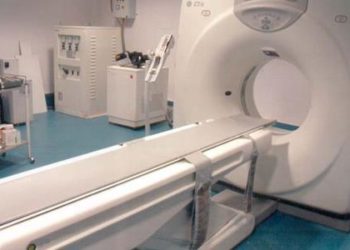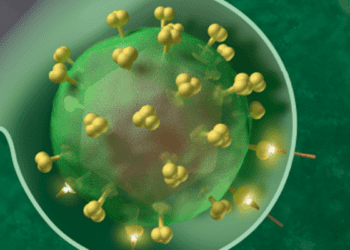Long-acting, reversible contraceptive methods linked to lower teen pregnancy rates
1. Teens who were presented with standardized contraceptive counseling that emphasized long-acting, reversible contraceptive (LARC) methods and provided contraception free of charge were most likely to choose LARC methods in this cohort study.
2. Teens enrolled in the Contraceptive CHOICE study had lower rates of pregnancy, live birth, and induced abortion than similarly aged, sexually active teens in the greater U.S. population
Evidence Rating Level: 2 (Good)
Study Rundown: Rates of teenage pregnancy are higher in the United States than in other developed nations; 3 in 10 teens will become pregnant before they reach 20 years of age. Teenage pregnancy has been linked with negative health and social consequences borne by teenage mothers and their children, as well as substantial financial costs to the health system at large. As a result, the Centers for Disease Control and Prevention (CDC) identified teenage pregnancy of one of six Winnable Battles for public health improvement. Prior research had shown that long-acting, reversible contraceptive (LARC) methods have higher continuation rates than short-acting methods and reduce the likelihood of pregnancy and of repeat pregnancy among teens.
The Contraceptive CHOICE study is a prospective cohort study specifically designed to answer the question of whether reducing barriers to LARC methods—including lack of information, limited access, and cost—would reduce unintended pregnancy rates among sexually active teenagers. Subjects included 1404 teenage women followed for 2 to 3 years, who were given a standardized contraceptive counseling session at baseline and then provided their choice of contraception for free during the remainder of follow-up. The implant was the most common choice among younger teens, while intrauterine devices (IUD) were most common among older teens. Over the follow-up period, there were significantly lower rates of pregnancy, live birth, and induced abortion among teens enrolled in CHOICE compared to U.S. population rates among sexually active teens in 2010. The reductions in these rates in fact exceeded the goals set by the CDC.
Drawbacks to the study include the fact that the pregnancy outcomes were self reported and therefore could be underreported. Furthermore, since there were so few pregnancies in the cohort, the authors relied on an annualized mean across several years of follow-up, which was compared to population rates for a single year (2010). Finally, there may be limited generalizability of results because teens enrolled in CHOICE received standardized counseling that emphasized LARC methods, which may not be the method of choice in all health settings.
Click to read the study, published today in NEJM
Relevant Reading: Effectiveness of long-acting reversible contraception
In-Depth [prospective cohort]: The Contraceptive CHOICE study was a prospective cohort study following 1404 adolescent women in the St. Louis area, aged 14 to 19 years at the start of follow-up, in which the use of long-acting, reversible contraceptive methods were emphasized in order to reduce unintended pregnancies. Enrolled women received baseline standardized contraceptive counseling that reviewed methods in order from most to least effective, along with side effects; they were provided their choice of reversible contraception at no cost and were followed for 2 to 3 years. Options included hormonal and non-hormonal intrauterine devices, implants, hormonal injection, oral contraceptive pills, the ring, and the patch. 484 participants were 14-17 years of age, and 920 were 18-19 years of age. Compared to younger teens, those who were 18-19 years of age were more likely to report more lifetime male sex partners, to have greater parity, and to have had a higher frequency of previous sexually transmitted infections. Teens 14-17 years of age were more likely than older teens to choose LARC methods (77.5% vs 68.4%, P<0.001); the implant was the most common choice among teens 14-17 years, while an IUD was most commonly chosen among older teens. 97% of teens enrolled in CHOICE were sexually experienced at baseline, and 99% were sexually experienced by 12 months of follow-up.
Over the follow-up period, self-reported outcomes included 56 pregnancies, 32 births, 16 induced abortions, 7 miscarriages, and 1 stillbirth. The mean annual rates of pregnancy, live birth, and induced abortion in the CHOICE cohort were 34.0 per 1000 teens (95% CI 25.7 to 44.1), 19.4 per 1000 teens (95% CI 13.3 to 27.4), and 9.7 per 1000 teens (95% CI 5.6 to 15.8), respectively. This compared to corresponding 2010 rates among U.S. teens of 57.4, 34.4, and 14.7 per 1000 teens, and rates among sexually experienced teens of 158.5, 94.0, and 41.5 per 1000 teens. The lower pregnancy, birth, and abortion rates among CHOICE participants versus the U.S. population were consistent when stratifying analyses by age group (15-17 vs 18-19 years) and race (white vs black).
More from this author: Gene mutation associated with antimalarial resistance across Southeast Asia, Moderate sodium intake optimal for cardiovascular health, Transfusion therapy linked with reduced neurovascular disease in sickle cell anemia, Severe subtype of acute lymphoblastic leukemia susceptible to FDA-approved kinase inhibitors, Mepolizumab reduces exacerbations in severe eosinophilic asthma
Image: PD
©2012-2014 2minutemedicine.com. All rights reserved. No works may be reproduced without expressed written consent from 2minutemedicine.com. Disclaimer: We present factual information directly from peer reviewed medical journals. No post should be construed as medical advice and is not intended as such by the authors, editors, staff or by 2minutemedicine.com. PLEASE SEE A HEALTHCARE PROVIDER IN YOUR AREA IF YOU SEEK MEDICAL ADVICE OF ANY SORT.








